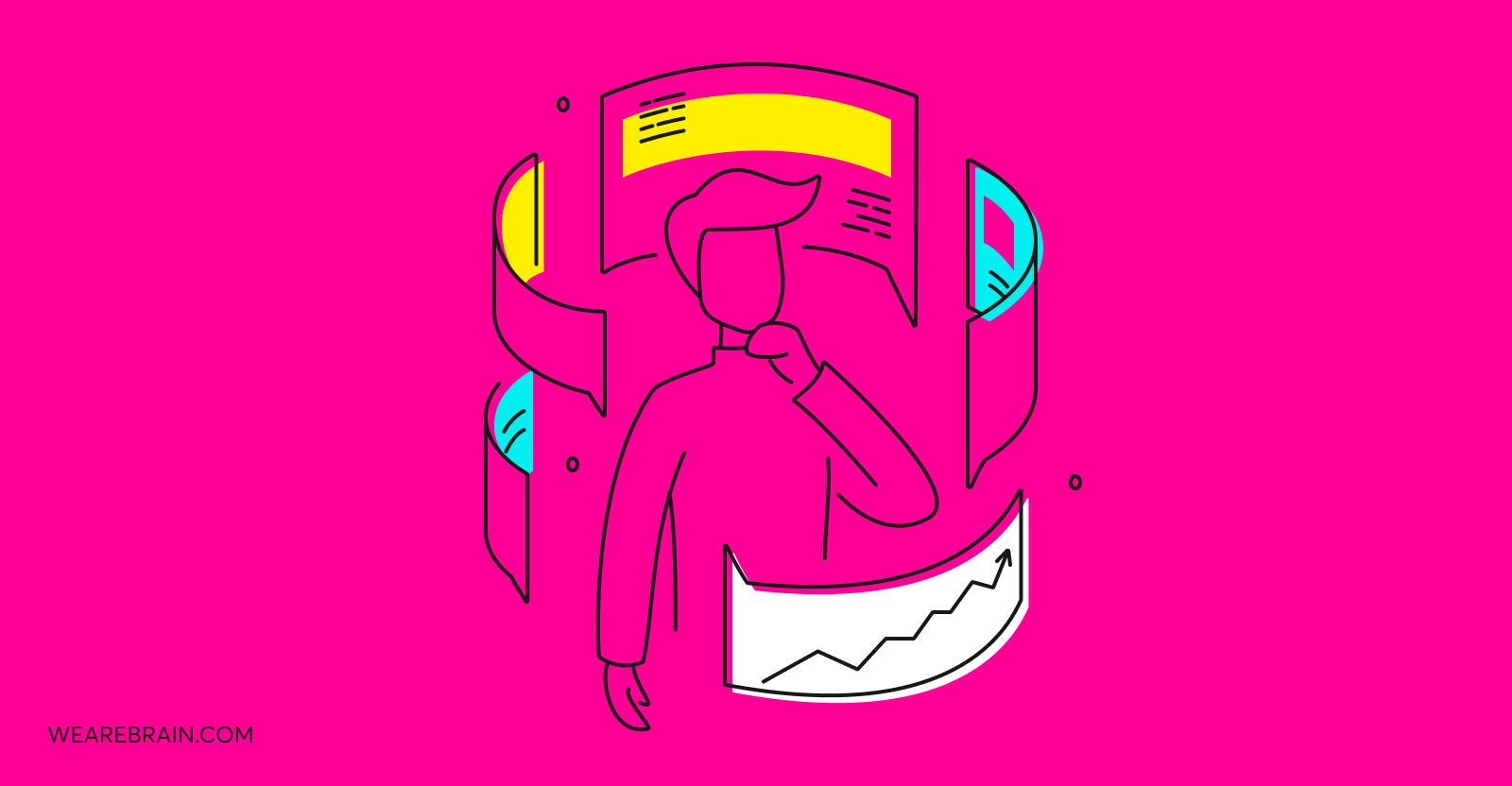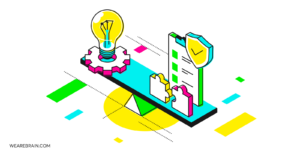3 important trends in the digital agency industry

As society and technology evolve they create new opportunities for businesses that do the same but tend to disrupt businesses that don’t. Nowhere is this more impactful than in the digital services industry.
It is imperative that a digital agency remains agile; constantly surveying its surroundings, and adapting in order to provide the types of service that customers require.
Below we discuss three important trends in the digital agency industry which are beginning to gather momentum. Awareness and responsiveness to these trends will determine the successful digital agencies of the future.
- Consolidation and differentiation
- Gender equity
- Web3
These trends indicate that there are a variety of forces at play that drive and direct the digital agency industry, namely and respectively;
- Business evolution
- Social movements (human rights)
- Technological innovation
Consolidation and differentiation
Because forces of business evolution are generic and apply across most industries, it is possible to peer into the future of young industries with a degree of certainty. One of the most important macro trends in the digital agency industry right now is consolidation.
Consolidation is a positive and normal part of the evolution of most industries and is driven by competition. It helps to establish economies of scale that drive down the cost of goods and services, and can make the marketplace more competitive – and therefore affordable – for consumers.
Elvire Jaspers (our CEO) maintains that newly consolidated digital agencies benefit from:
“…reduced agency overlap that eliminates redundancies in key business areas, and improves business ecosystems by:
- Achieving better brand cohesion and consistency across all departments
- Streamlining business operations and increasing agility
- Implementing agile workflows
- Moving towards centralised points of contact
This will result in more reliable results and improved cost controls for businesses…”
In his article, How an Agency Used Acquisitions to Double Growth, Jason Swank indicates how consolidation is an all-win situation, benefiting the new company that emerges with growth, the old company owners with a sale of their business, and customers with an improved and more efficient digital agency. In particular, he discusses four main points relevant to considering growth by consolidation:
- The fact that an agency need not to be big in order to buy another
- The fact that consolidation can occur without large cash holdings in the buying agency
- Suggested structures for agency consolidations
- Criteria to evaluate an agency you want to buy
Another strategy that leads to success under intensifying competitive conditions is differentiation. Jack Trout published his famous book; “Differentiate or die” back in 2000. The title has become a business truism, representing the single most important sustainability strategy in an increasingly competitive environment.
Differentiation is what makes a product or service stand out to its target market. It’s how a company distinguishes what it sells from what its competitors do, and it increases brand loyalty, sales, and growth. The digital agencies that will survive as the market becomes tighter and more competitive are the ones that differentiate!
One of the most effective ways for digital agencies to differentiate is by committing to excellence within specific and carefully chosen niches in the overall digital market; to become the go-to agency for that service.
Currently, it is common for digital agencies to brand themselves as ‘full-service’ agencies, however, over time and with increased competition, it is likely that digital agencies will tend to specialise and become industry experts in one or a few of the digital agency services below;
- Website strategy
- UX/UI design
- Search Engine Optimisation (SEO)
- Search Engine Marketing (SEM)
- Content generation and optimisation
- Software Development
- App Development
- Website development and testing
- Artificial Intelligence and automation
Interestingly the above phenomenon may not be particularly visible to customers, since it is likely that specialised agencies will band together on a project to fulfil the client’s entire online agency requirements, though the specific services may be delivered by differentiated agency shops.
Gender diversity
It is staggering (not in a good way!) that the topic of gender diversity is a point of conversation in 2022. The issue should belong firmly in the 20th Century, but sadly in the IT industry, it is still very relevant.
Here’s the problem: For decades, the number of women in technology and IT-related occupations has paled in comparison to other high-profile fields such as medicine, law, and the physical sciences. While the US Census Bureau and other government reports show women’s participation in the US workforce jumping from 38% in 1970 to 47% in 2014, the percentage of women in tech-related occupations (according to a 2020 study by the AnitaB.org) is only 28.8%.
Elvire Jaspers suggests areas of change required to ensure more female representation in AI, including; education at grassroots, dispelling inappropriate stigmas, eradicating the ‘bro-culture’, and promotion of female role models in the IT industry. Jaspers also comments strongly regarding the positive impact that supporting female entrepreneurship would have on the progression of gender diversity.
Below are the reasons your digital agency should become a trendsetter in the IT industry with regard to this burning social issue.
Profitability and productivity
Strong evidence supports the fact that gender diversity has a positive impact on profitability. According to McKinsey, gender-diverse companies are 21% more likely to experience above-average profitability. Further, MSCI reported that having women on the board of a company boosts productivity.
Consumer alignment and brand promise
Women constitute 50% of the population and have more purchasing power and buying influence. Improving gender equity better enables a company to represent its customers and also to communicate with them. Digital agencies have a global reach and women spend around 40 trillion US annually – it’s time we see this change happening!
Talent
There is a global shortage of technically qualified and skilled people in the IT industry. Companies that don’t encourage women to join them and advance through their ranks are missing out on the talents and abilities of half the population.
Creativity and innovation
Diversity of all types enables your digital agency to benefit from different outlooks and approaches as a result of people’s different life experiences. A variety of perspectives sparks creativity and innovation in a digital agency enabling it to spot and actualise new opportunities, and thereby better serve its customers.
Collaboration
Gender diversity improves group collaboration and enhances team processes because women generally have superior abilities to read non-verbal cues. It’s also been shown that groups with closer to equal gender ratios tend to have less combative and more collaborative conversations and meetings, leading to improved combined group knowledge and skills.
Before you commission your next project, you might want to consider researching your digital agency’s gender profile to ensure they’re on board with such an important human rights issue.
Web3
Imagine you’re back in the early 80s and someone is telling you about this amazing thing that is going to change the world and have a huge impact on business – the internet. You can’t easily imagine it, you certainly don’t understand it, and it’s impossible to know for sure how it will manifest.
It’s likely that your response to reading about Web3 will be similar to the above. But rest assured, Web3 is going to impact the world dramatically, and the digital agency industry in particular – almost as much as the internet impacted the non-digital.
It’s important to consider the fact that it will take some time for Web3 to come into its own – maybe three to five years – but it will, so best watch this space for updates on the implications and opportunities that arise as Web3 becomes the global norm.
As described by Wikipedia, the term Web3 was coined by Polkadot founder and Ethereum co-founder Gavin Wood in 2014, referring to a “decentralized online ecosystem based on blockchain”.
Web3, as the name suggests, is the third major phase in the development of the internet. Web1 was the initial manifestation where one could find a website and view the content, but not much more. Web2 created major business disruption and unparalleled business opportunity because it enabled people to more easily interact with sites and upload content. This led to the social-media boon which created the digital agency industry. On the surface, Web3 will be the same as Web2, it will have all the internet functionality we currently enjoy. What will change, however, is the underlying technology and this will have big implications. Think of the difference between a landline and a cellphone; both can be used to talk to people remotely, but cellphone technology has opened the door to enormous opportunity and user convenience, not to mention business disruption.
At a basic level, the idea behind Web3 is to take the internet as we know it and add blockchains – the technology behind cryptocurrencies like bitcoin – to everything.
Blockchain is a new way of recording and transferring information on the internet securely. The importance of this is that it enables the end-user to maintain complete control of their data and therefore be able to decide what information they want to share with corporations and advertising firms. In fact, it is probable that users will be given the opportunity to earn from the data they choose to share.
At this point you’re probably asking; so how does it work? Well, at the core of Web3 are distributed applications (or dApps) built using the Ethereum blockchain, which pays out to users who help keep its network online. dApps will play a similar role for Web3 that the App Store did in unlocking the potential of the iPhone.
With the above as an introduction to Web3, let’s look at some of the major implications blockchain technology will have for marketing and digital media.
Data collection and privacy
Blockchain gives individuals complete control over the use and distribution of their personal data. This creates opportunities for loyalty schemes that pay users for their data, or for watching an ad, or any other interaction directly between the company and the individual. Most importantly blockchain eliminates the middleman; Facebook, Instagram, etc. This is the reason Facebook has rebranded itself as Meta and is scrambling to create an Augmented Reality (AR) ’Metaverse’, wherein it will be able to attract big brands with advertising opportunities.
Ad fraud, data quality, and reporting integrity
Internet ad fraud is enormous; in the region of $20Bn per annum. It happens when automated machines (bots) view ads instead of humans; the ad-view is charged but can have no marketing impact. Forrester reported that 56% of all display ad dollars were lost to fraud in 2016. This has resulted in big brands drastically cutting their online ad spend. Web3, using blockchain will enable targeted and verified ad delivery and consumption by registering every consumer’s interaction and therefore verifying that an ad was watched by a person and not a bot.
Ad delivery, frequency, and timing
Building upon the above points, Web3 will enable targeted ads (adverts consumers have indicated they want to see) to be displayed when they want to see them. This will reduce consumer frustration and fatigue with regard to advertising and is nothing short of a marketer’s dream come true.
A brave new world
Supported by Web3 infrastructure, new technologies like Artificial Intelligence (AI), Machine Learning (ML), and Virtual Reality (VR) will combine to create a 3D experience that blurs the barriers between digital content and actual things, benefiting both businesses and consumers.
In closing
The impact of technology as a force on digital business is so apparent that commonly we don’t consider other forces at play shaping the industry. In the above we have highlighted three important trends in the digital agency industry, each being driven by a different force.
Business evolution is driving consolidation in the digital agency industry, and we highlighted the benefits it brings in the form of establishing economies of scale that drive down the cost of goods and services, and make the marketplace more competitive – and therefore affordable – for consumers.
Protection of equal rights and opportunities is central to democracy and global stability. It is sadly ironic that gender inequality is rife in the IT industry. The benefits of gender diversity in the digital agency are highlighted above, together with suggestions regarding the importance of, and ways to, level the playing field.
Web3 with blockchain as its foundational technology is about to change the internet by giving back control and ownership of user data to the user. Among other things, this will reduce online ad fraud and enable marketers to interact directly with potential customers in the manner they desire.
It is clear that in the foreseeable future the digital business arena will remain an interesting and fast-evolving space in which to operate because of many forces – technological and human – that impinge upon and impact processes and protocols for individuals and digital agencies. We recommend you keep an eye on our future posts to ensure you know what’s coming down the line.
Mario Grunitz
Working Machines
An executive’s guide to AI and Intelligent Automation. Working Machines takes a look at how the renewed vigour for the development of Artificial Intelligence and Intelligent Automation technology has begun to change how businesses operate.







